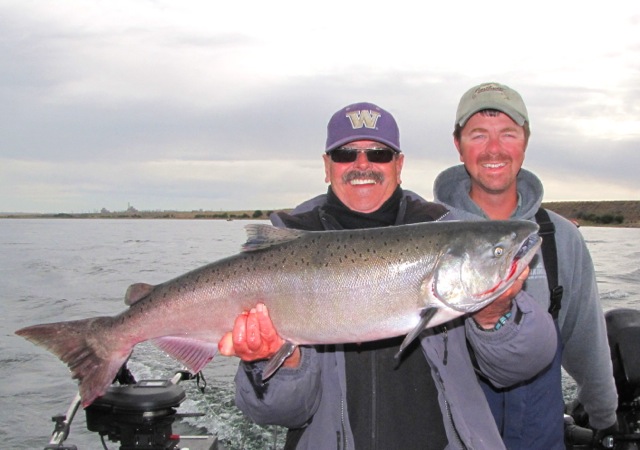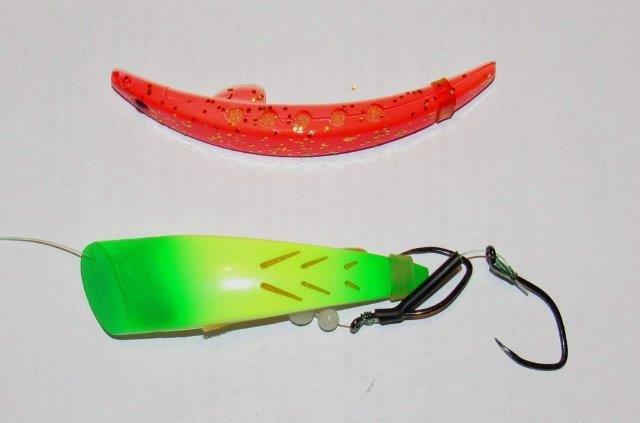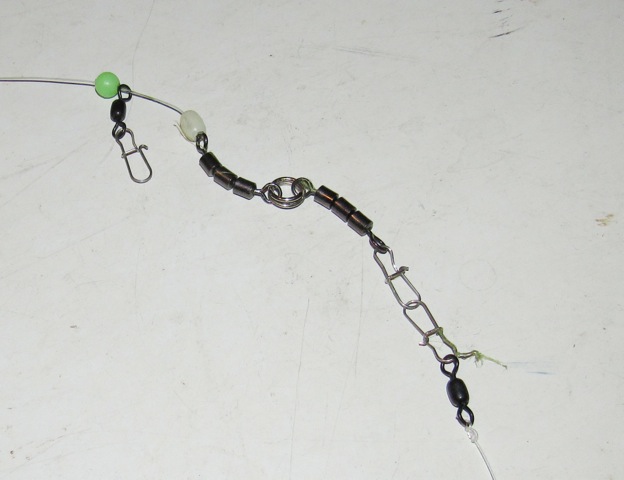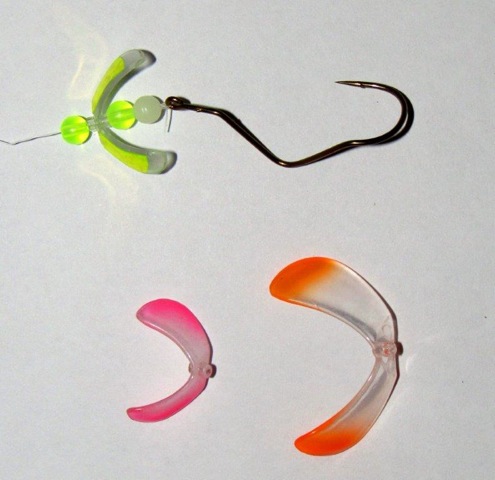Fall Anglers will be Busy With Kings and Walleye Leave a reply
By Dave Graybill
Fall in North Central Washington is most often the favorite season for anglers in the region. Our weather cools a bit and it makes it more appealing to be out on the water after the heat of summer. While the weather is cooling there are a couple of fisheries that heat up in the fall. The one that draws the most attention is the annual return of fall salmon to the Hanford Reach area of the Columbia River. The other is the fall walleye bite on our area reservoirs.
Shane Magnuson of Upper Columbia Guide Service poses with me with one of the kings we got at Vernita.
Every year the most abundant run of salmon to the Columbia River makes it way to our region. Over a half million “up river brights” are expected to enter the Columbia this year, and the vast majority are bound for the Hanford Reach and the hatchery at Priest Rapids Dam. The attraction of fishing for these kings is most apparent at the launch sites near the Vernita Bridge. A small village of campers, trailers and 5th wheelers appears here every year, as anglers set up camp and commute from all over the state and beyond to chase these prized fish.
The launches a Vernita are rough, but they don’t stop the long lines of boats of all sizes and shapes from putting in here. From this launch they can run down below the bridge to popular fishing locations above and below Coyote Rapids, the Reactors, and the long runs that are ideal for trolling for kings. Down stream there is a good concrete ramp at White Bluffs that also offers good access to the king fishing water. Parking here is more limited than at Vernita and the fishing area is smaller, but it can be very productive. The kings must pass through White Bluffs on their way to the hatchery at Priest Rapids, so the action starts off here first.
For many years I preferred fishing with herring in the Reach. That is just how it was done—back bouncing herring. In recent years Super Baits have taken the main stage for salmon anglers. Sure, there are times when herring will do the job, but the number of fish taken on Super Baits far outnumbers other methods.
There are two styles of Super Baits. The original on top and the
Plug Cut on the bottom.
Super Baits are typically trolled behind Pro Troll flashers on downriggers. I saw a different method being used in 2014 when I was shooting some video of the CCA King of Reach Salmon Derby. This guy, and he had the reputation of being one of the top, if not the top salmon slayer of the group, was trolling Super Baits, but in a way I had never seen before. He had them rigged behind a flasher, but instead of using downriggers he was fishing them with lead balls. He would troll both up stream and down stream and he claimed that the lead ball method put a different action on the Super Baits and were terrifically successful. He didn’t fish any other way.
Using lead balls for kings isn’t something new. I have fished with Shane Magnuson many times on the lower Columbia for spring and fall salmon and he used lead balls. In fact he decided to try them on the upper Columbia River kings starting last year, and now that’s pretty much all he does anymore. When he fishes for spring salmon, at Drano Lake for example, he uses those triangular Fish Flashes, but for summer runs up here he uses the Pro Troll flashers. When he fishes Vernita this fall, I will bet he will be running lead balls. I am presenting this technique as something an angler should have in their bag of tricks. There will be times that the standard presentations of Super Baits on downriggers, back trolling eggs, pulling plugs or using herring will be the way to go.
If you want to try fishing lead balls, here is how to set up. I will start at the Super Bait and work my way up. After you have put a 44- to 48-inch leader on your Super Bait and attached it to your flasher, add a 24-inch leader of 30-pound test with snaps on both ends. This allows the flasher to do its work below the lead ball. I rig the next step the same way that Shane does. I put a split ring between two five- or six-bead roller swivels. To one end I attach the leader above the flasher. To the other end I attach my main line with a plug snap with a rubber bead above the knot, and a sliding plug snap, to hold the lead ball. Now when I attach my lead ball it can slide freely on my line. The size of the lead ball, whether an eight-, ten- or 12-ouncer, depends on the current. You will want your flasher rotating above the bottom where you are fishing, and this will take a little practice to judge your depth when trolling lead balls. Also, remember when you are trolling down stream with the current you will be flying compared to trolling up stream against the current. The best way to judge your speed is to watch your rod tip and try to maintain a rod pulse once every second.
Here is how a lead ball rig can be rigged. Lots of swivels for a
spinning Pro Troll Flasher.
It’s really not that hard to rig for fishing with lead balls. You can have everything ready if whatever you are doing on a particular day just isn’t getting the job done. It just may change your luck, and once you get comfortable fishing this way it may become your favorite way to hook kings—anywhere on the Columbia.
As for the walleye fishing this fall, I would bet that Banks Lake will continue to be the best place to try your luck. It wasn’t always producing limit catches this summer, but it was the most consistent of our region’s walleye waters. Potholes Reservoir should produce walleye this fall, too, but probably not at the same pace as Banks. It will be very low this fall. In the early fall crank bait fishing should be effective then trolling bait will become a better way to go. Walleye on Potholes will be heavier than the Banks Lake fish.
The crank bait fishing on Banks Lake should continue to be good. I have had very good success this summer fishing cranks and found the Flicker Shad lures in sizes 5 through 9 very effective. I didn’t start the season fishing crank baits, and don’t think I will end the season using this method. I started trolling with spinners on worm harnesses or Slow Death Hooks, and I think I will be ending the fall season using these.
Something that I was able to use this past season just recently came on the market yet. It is from the makers of Dutch Fork Custom Lures that I had been fishing almost exclusively. I had tremendous success with their ghost blades, especially the Turtle Back in the Blue Tiger color. They sent me a brand new design to test, and I found it works great. They call it the Butterfly Blade and it can be fished in worm harnesses and even ahead of a Slow Death Hook. I tested these revolutionary blades and had great success, and if you are a walleye angler you will want to try them on Banks and Potholes this fall.
This the new Butterfly Blade created by Dutch Fork Custom Lures.
The top shows one rigged on a Slow Death Hook.
The new Butterfly Blades just came available recently. Dutch Fork is supplying the blades to Northland Tackle and can be purchased in a variety of colors and pre-tied for a variety of fishing styles. Just log onto www.northlandfishingtackle.com and do a search for Butterfly Blades. This will send you to the page that has them available. You can also find the blades on the Dutch Fork Custom Lures page, and tie them up the way you like. Go to www.dutchforkcustomlures.com and can you look at the colors available through them and order what you want.
It is usually pretty hard to get me to switch from my favored methods of fishing, no matter what species. When I got the spinners from Dutch Fork I immediately become a believer, particularly in the Turtle Back style. These new Butterfly Blades are unique and there just isn’t anything else out there like them. If you are serious about catching walleye you will want to have some in your box.
I know I will start my fall fishing at Banks Lake off the Million Dollar Mile launch. There will be a point at which this will be less effective. When that happens I will move up to Barker Canyon and start pulling spinners and Slow Death Hooks on bottom bouncers. Two years ago we could fish both Banks Lake and Potholes right through the fall and winter. Last year they froze solid.
I don’t know how long I will be able to fish for walleye on these two reservoirs. The way I am going through the walleye in my freezer I hope we have a long fall season!
Dave Graybill
Outdoor Line Blogger
710 ESPN Seattle
TheOutdoorLine.com





